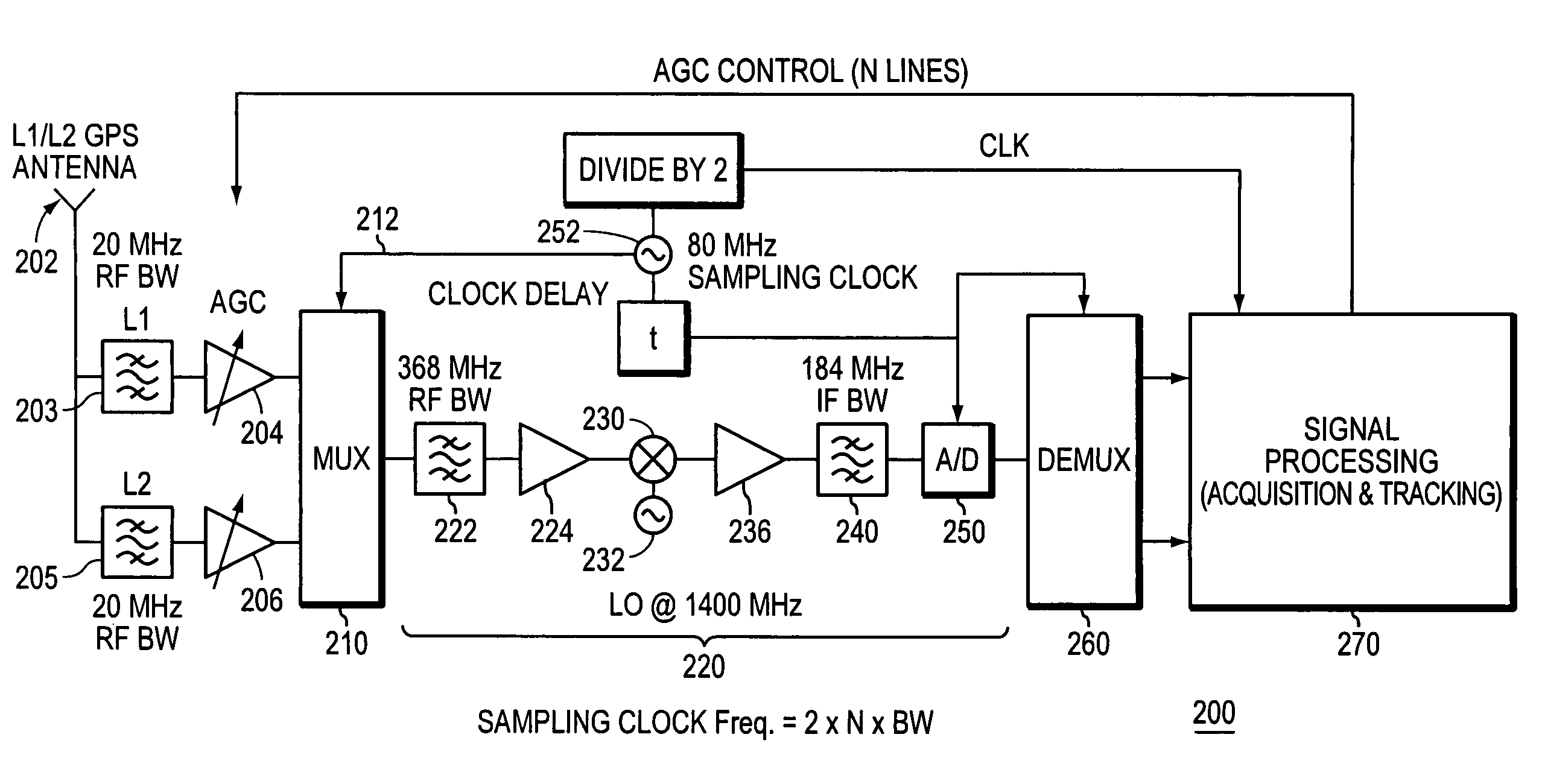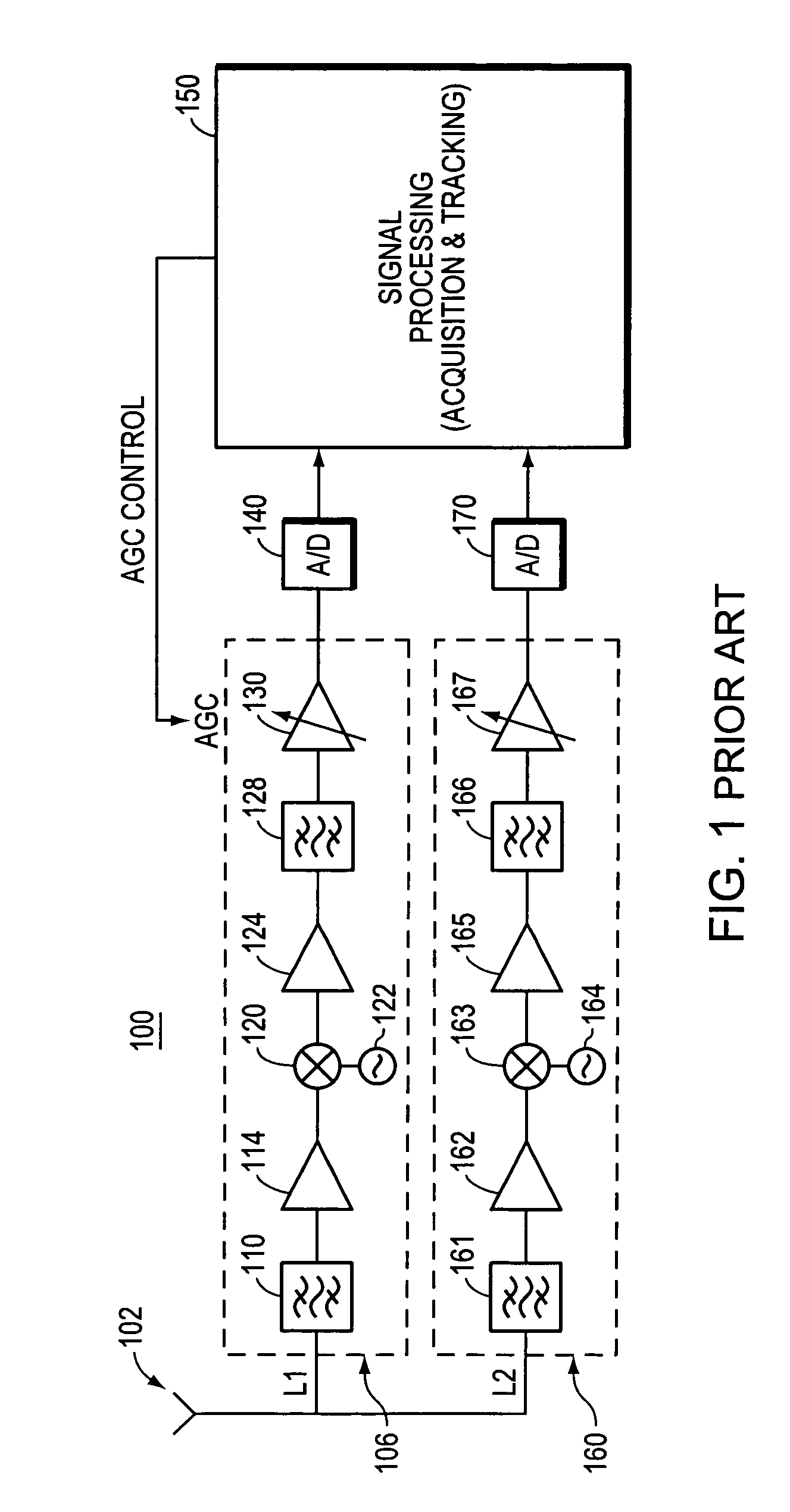Spatial and time multiplexing of multi-band signals
a multi-band signal and spatial multiplexing technology, applied in the direction of instruments, pulse techniques, polarisation/directional diversity, etc., can solve the problems of dead periods between samples, reduce complexity, simplify the structure of each receiver, and reduce the amount of space required
- Summary
- Abstract
- Description
- Claims
- Application Information
AI Technical Summary
Benefits of technology
Problems solved by technology
Method used
Image
Examples
Embodiment Construction
[0034]FIG. 1 is a block diagram of a conventional L1 / L2 heterodyne GPS receiver 100.
[0035]The receiver 100 has an antenna 102 which receives ranging signals in two frequency bands, namely the L1 and L2 bands. The L1 frequency band is associated with the downconverter stage illustrated in the dashed block 106, and is thus referred to herein as the downconverter stage 106. The downconverter stage 106 includes an RF band pass filter 110, which is a low insertion loss filter having a selected pass band centered at a desired carrier frequency. The band pass filter 110 should have a sufficiently wide range to allow several harmonics of the PRN codes to pass. The filtered signal is then passed through a low noise amplifier 114. Thereafter, heterodyning is performed using the mixer 120 which down converts the received signal from the carrier frequency to a desired intermediate frequency by mixing the received signal with a sinusoidal signal of an appropriate frequency that is produced by a ...
PUM
 Login to View More
Login to View More Abstract
Description
Claims
Application Information
 Login to View More
Login to View More - R&D
- Intellectual Property
- Life Sciences
- Materials
- Tech Scout
- Unparalleled Data Quality
- Higher Quality Content
- 60% Fewer Hallucinations
Browse by: Latest US Patents, China's latest patents, Technical Efficacy Thesaurus, Application Domain, Technology Topic, Popular Technical Reports.
© 2025 PatSnap. All rights reserved.Legal|Privacy policy|Modern Slavery Act Transparency Statement|Sitemap|About US| Contact US: help@patsnap.com



